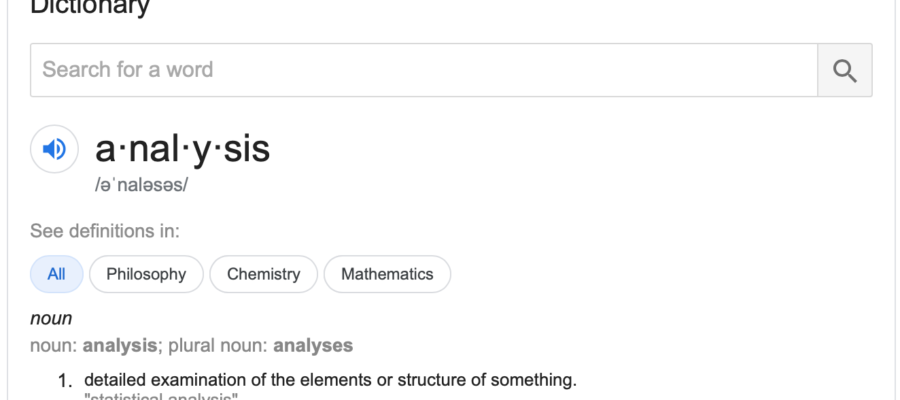What do all these structural analysis terms mean? As part of recent work with AISI and AISC code committees we have been developing working definitions for nonlinear structural analysis. A draft of the terms we have developed to date are shared here so others might provide improvements and consider these for their own use.
Structural Analysis. Determination of load effects on members and connections based on principles of structural mechanics, typically using a model.
User Note: Structural Analysis is the means by which ASCE 7, or other applicable loads are turned into demands on the members, connections, or structure as a whole.
Frame Structural Analysis. A common form of structural analysisthat employs one-dimensional framework elements in its structural model.
User Note: Framework elements are known as beam or line elements. These elements do not include cross-section distortion or cross-section imperfections. Many line elements do not include the effects of cross-section asymmetry or warping torsion, both potentially important issues for many cold-formed steel members.
Linear/First-order Analysis. Structural analysis in which equilibrium conditions are formulated on the undeformed structure.
User Note: Linear, or first-order (elastic) analysis is the only form of analysis for which superposition applies, making it popular for handling many different load cases, but it is the most limited in terms of its predictive capability.
Linear Buckling Analysis. Structural analysis to determine the load in which the equilibrium of the structure and/or member (approximated with linear elastic material) is neutral between two alternative states: buckled and straight.
User Note: Also known as elastic critical load or eigen-buckling analysis, linear buckling analysis may refer to buckling of the frame or the member cross-section; typically referred to as frame buckling analysis and cross-section buckling analysis respectively.
Nonlinear Buckling Analysis. Structural analysis to determine the incremental load, beyond a known stable equilibrium, in which the equilibrium of the structure and/or member is neutral between two alternative states.
User Note: Also known as an iterative buckling analysis, inelastic critical load, or inelastic eigen-buckling analysis. This form of nonlinear buckling analysis can be particularly useful for analyzing bracing of members in the inelastic range.
Material Nonlinear/Plastic Analysis. Structural analysis in which equilibrium conditions are formulated on the undeformed structure, but considering non-linear and/or inelastic materials.
User Note: Also known as first-order inelastic analysis, plastic hinge analysis, or plastic design, material nonlinear analysisis a method long used for understanding the limits of re-distribution of moments and finding collapse capacities in frameworks.
Geometric Nonlinear/Second-order Analysis. Structural analysis in which equilibrium conditions are formulated on the deformed structure.
User Note: Geometric nonlinear/second-order analysis includes, but is not limited to, such effects as the additional moments developed due to deformations in the structure/frame (P-∆), member (P-δ), and cross-section (P-δc). Equilibrium in the deformed structure is not limited to P-delta effects, other common effects such as the redistribution of moments between the major and minor axis as a member twists also commonly occur. Approximate geometric nonlinear analysis methods using simple amplification expressions such as B1and B2of Appendix xxx have long been used in codes and standards such as this Specification, and are appropriate when used with care.
Geometric Nonlinear/Second-order Analysis with Imperfections. Structural analysis in which equilibrium conditions are formulated on the deformed structure, and geometric imperfections are included.
User Note:This form of analysis is the basis for the Direct Analysis Method of Chapter C of this Specification. When imperfections for the structure/framework (D) and along the member (d) are both considered this form of analysis is also known as Direct Modeling of Member Imperfections and Appendix 1 provides guidance on application. [AISI only Cross-section imperfections (dc) may be necessary to adequately capture the behavior of CFS members; however, this may require sophisticated analysis tools such as shell finite elements.] The magnitude and distribution of imperfections can have a pronounced influence on the results in many structures. The phrase ‘geometric imperfections are included’ does not require that all geometric imperfections be explicitly modeled, rather that their effect be included, in some cases this is efficiently performed through the use of notional loads.
Geometric and Material Nonlinear/Second-order Inelastic Analysis with Imperfections. Structural analysis in which equilibrium conditions are formulated on the deformed structure, the potential for non-linearity and/or inelasticity of the material is included, and imperfections (both geometric and material) are included.
User Note: Also known as (nonlinear) collapse analysis or advanced analysis, this method is generally regarded as the highest level of analysis. [AISI note: The engineer still must recognize the limitations of their analysis choice, for example, when frame structural analysis requires special considerations if employed with CFS members. GMNIA with shell finite elements may be appropriate for collapse analysis prediction of CFS assemblages, and is commonly used in research.] Sensitivity of the results to the boundary conditions, element formulation, solver, as well as material and imperfection modeling choices is to be expected and should be understood by the engineer prior to applying GMNIA results in design.

